Lifestyle
The Department for the Protection of Cultural Goods has accepted the initiative to establish the protection of assets – making wooden boats.
The Shipbuilders Workshop "Bokovac" pointed out that the conditions for further steps - the application of regulations for the protection and determination of the value of the goods - have been obtained.
Radomirka-Lala Bokovac from the workshop, which has been making wooden boats for decades, says that by insight into the legal documentation on cultural assets and heritage, it has been established that for the good "construction of a wooden boat" no valuation of cultural-historical value has been done so far. She stressed that the adoption of the initiative is a strong wind in the back "both to us and to all who deal with traditional shipbuilding".
"The production of wooden boats possesses the required traditional values, as evidenced by the preliminary results of the research findings. This act is of great significance for us and our decades-long work and effort in traditional wooden boat making, which is now for the first time valued in the right way. In our Shipbuilders Workshop, persistently, with love and much denial, practically without the right and sufficient assistance, we preserve and maintain the ancient knowledge and skills of the old craftsmen, shipbuilders, boatmen, and sailors. There are few of us in Bar, Kotor, Tivat and Herceg Novi, as well as beyond the borders of Montenegro" said Bokovac.
In March last year, three "baranka" - wooden boats with sails "born" at the Shipbuilder Bokovac workshop were sailed for owners from Abu Dhabi.
This was the first export to Arabia of a domestic final product made in Bar, not only in this era, and as was previously announced, the boats were produced by shipbuilders from Bar - Nenad Neno Bokovac and his father Pero.
"A wooden boat is a miracle for the culture and tradition of a naval country if that is properly valued. They need to be maintained, we have a few models, it is the national treasure of the state, and the history and the future of maritime affairs. Everything started with these wooden boats, and everything will end with them," says Nenad.
During construction, the builders use mulberry, mulik, acacia, and add some teak and mahogany.
According to Nenad's words, the mulberry is very easy when it is dry and strong and durable, so is mulik and thus the ships can easily last for almost a century.
Lala, Nenad's wife, points out that hand-crafted ships can be the bearers of the Montenegrin identity in the tourist sense and economic progress, and above all serve in the preservation of the tradition.
"The country without tradition is empty, people are reflected in the culture and tradition of their own country, and the main driver and push for tourism is culture and tradition, which are the things Montenegro is most proud of. Because of this, the act of accepting the initiative is a big step towards protecting small wooden shipbuilding, regardless of the origin area of a ship, a tradition that unfortunately becoming extinct on the Adriatic," said Bokovac.
The five-year-old wooden boats of Bokovci sparkle in the summer in front of the Hotel Regent in Porto Montenegro, where they are seen by passionate sailors from UAE. They were impressed by the boat's performance, so they came to Bar, where they were thrilled to see that Bokovci ships are traditionally built without epoxy resins. They ordered three "baranka" which have their mark. Pero and Neno say they do not know exactly how many boats they have repaired, but they point out that, not just in Bar, all the wooden ships went through their hands.
Neno says that the oldest boat which he repaired was "Markisa" anchored at marina Bar - which was 118 years old.
"The quality of a wooden ship in relation to plastic and metal is its stability on the sea, safety ... But its maintenance is difficult and expensive, so you do not have to take a wooden boat if you do not like to work on it. It is not just said that a man with a wooden boat is happy twice - the first time when he buys it and the second when he sells it," says Nenad Bokovac. He explains that there are two meanings of the word kalafat (shipbuilder), which is used both in Italy and in Croatia.
"It's the master who puts the tow between the boards, and the other - that's the chief master. So, that is my father Pero who started the ship-building in Bar in 1965, and today he supervises all the works on wooden boats and is dedicated to this, for someone a craft and for others - art. Kalafat (shipbuilding) is a special type of carpentry, but it cannot be executed by only a carpenter," says Nenad.
Text by Radomir Petric, on January 20th, 2019, read more at Vijesti
The largest swimming for Epiphany (Bogojavljenje) in Montenegro was held in Podgorica, at the mouth of Ribnica in Moraca.
More than 200 people participated in the swimming for the Holy Cross.
Goran Čađenović was the first one to arrive at the cross, while the fastest one among the females was Slađana Ćuković.
Just as ten years ago, when the Epiphany swimming was held for the first time in this century in Bar, and Tomo Pekic was the first to arrive at the Holy Cross.
During rainy weather in front of hundreds of citizens of Bar on the town's beach, more than 60 believers swam for the Holy Cross, among whom the youngest participant Pavle was only three years old. This year more children participated in the Epiphany swimming, even the girls, the youngest of which was seven-year-old Petra.
“This is the second time that I swim for the holy cross. I was swimming ten years ago when I also arrived first. For ten years I did not swim for the Epiphany. I wanted to mark the decade when I was only 18 years old when I arrived first to the holy cross. I was honored that for the second time in my life I arrived first and thus marked this jubilee, "said Pekić, who is the assistant coach at the Women's Volleyball Club “Galeb”.
Draško Jelovac from Tivat was the first to reach the holy cross in the traditional Epiphany swimming at Miholjska Prevlaka. In the swim, there was the largest number of participants so far - over seventy, including dozens of girls, and the event brought together a large number of believers from Tivat and Boka Bay. This year, before the swim, they entered the sea with the chief priests of the Miholjska church.
Marko Mićović (19) from Banjani is the winner of Epiphany swimming, which was organized for the first time by the Church municipality Nikšić on the river Zeta, near Manitovac, while in Bar Tomo Pekić (28), the assistant coach at ŽOK Luka Bar was the first to arrive to the holy cross. This is the second time for Tomo to be the fastest swimmer at the Epiphany.
Nikola Radonić from Baosici was the first to reach the epiphany cross at the Skver in Herceg Novi. This year's contest included 48 swimmers, including three women swimming in the sea whose temperature was 11 degrees.
Though it was a rainy day with showers the sky was clear at the time of the swim.
Text by CdM, on January 19th, 2019, read more at CdM
The concert of the National Symphony was held at the Montenegrin National Theater (CNP), performed by the Chinese troupe Gansu. The concert is part of the China Culture Week, which began on Wednesday, and is organized by the Embassy of the Republic of China in Montenegro.
The Chinese artists gathered in Gansu's troupe, in front of the full CNP, and brought a rich Chinese music culture using musical notes. They performed the masterpiece "Silk Road" on traditional Chinese instruments for the Montenegrin audience, which has been accompanied by several encores.
During the whole concert, the audience followed the troupe's performance in rhythm and judging by the reactions, experienced the spirit of the specific traditional Chinese music in the right way.
Two Chinese artists who celebrated their birthday on the scene last night were greeted with thundering applause.
The leader of the Gansu troupe, Yang Jianren, said that 32 artists were presented to the Montenegrin audience last night, who were performing on major tours around the world.
"We've evoked the particularities of the Chinese culture with music and 'Silk Road'. There is no limit in music, hearts do not demand the same language and I believe that this is what the Montenegrin audience felt. Also, I believe that through art we will make a friendly bridge between our two countries," said the leader of the troupe.
China's Ambassador in Montenegro Liu Jin said that the Chinese Embassy wants to meet the Montenegrin people with the Chinese culture in anticipation of the grand holiday - Chinese New Year.
"Relationships between Montenegro and China are traditionally friendly. Culture is an important link that can further bring the two populations closer together. We want to say that relations between the states are most dependent on the relationship between citizens, and I hope that the two countries' interpersonal and cultural cooperation will be even better," said the ambassador.
Let’s recall, during the Chinese Culture Week, the cultural richness of the country will be presented through three thematic groups - The Week of Chinese Film, the Concert of the National Symphony and the Two-Day Presentation of Chinese Intangible Heritage.
Lovers of the Seventh Art in the cinema “Cineplex” in Delta City can watch the movie “Youth” today at 6 pm, while at the same time tomorrow there is the cult movie from 1993 "Good-bye, my concubine". On Sunday the romantic comedy "Love is not blind" will be screened, on Monday, the Chinese film that won four Oscars, "Silent Tiger, Hidden Dragon", and the Week of Chinese Film will be closed by the screening of the film, whose scenes were also filmed in Montenegro - "Golden Job".
The Chinese Culture Week will be closed by the two-day event of Chinese Intangible Heritage. In the central auditorium of the Delta City, during the 22nd and 23rd January, the traditions and heritage of the city of Quanzhou, the cultural center of Southeast Asia will be presented. Visitors will be able to get acquainted with the process of making many famous Chinese handicrafts, such as colorful figurines of rice, holiday lanterns made of paper ribbons, but also with ancient painting art, stone carving, incense burning and drinking of tea.Access to all events is free of charge.The Chinese Culture Week is organized in the forthcoming of the China's New Year, the most important traditional Chinese holiday, which this year begins on February 5th, according to our calendar.
Text by CdM, on January 18th, 2019, read more at CdM
January 19, 2019 - The Little Fiesta of Orange will "spice up" the Jubilee 50th Mimosa Festival with salty and sweet delicacies. Organization members and their guests have prepared rich gastro content devoted to orange. NGO Hands from Herceg Novi is organizing the Little Fiesta for the fifth time.
The police in Bar escorted several citizens who rebelled against the cutting of cypresses in Bar.
Three of the civilian protesters were taken to the police station where, according to police quotes, "they should make statements as citizens".
In front of the building of the police in Bar gathered 30 citizens, relatives, and the friends of three young men, one of whom is a student at the gymnasium in Bar.
Among the citizens are also professors from the schools in Bar.
Young men were released after giving statements and were welcomed by the applause of the citizens.
Stevo Martinovic, Bojan Rukavina and Uroš Pajovic told reporters that they were taken to the police because they undertook passive resistance to police officers, that the police officers treated them fairly and that they protested quietly against the cutting of the cypress trees within the fenced area.
Due to the lack of personal documents, Blažo Marinović was also in the station and was released after giving a statement.
Many police officers were present at the site.
In front of the construction site fence, citizens yelled "UA" at the sound of the wood-saws and were singing the national anthem.
This morning, around six 6 a.m., the cutting of the cypress trees began in front of the gymnasium in Bar.
The trees were removed to build a kindergarten there.
Citizens of Bar were battling for weeks in order to save the cypress trees and kept watch to protect them.
The petition was signed by thousands of citizens, but the city authorities remained silent.
By 8 a.m. almost 20 trees had already been cut.
Police officers were legitimizing civil activists this morning, who gathered in the enclosed yard and said to "decide whether to continue the protest or not.
Around 8:30 a.m. there were 15 activists inside the site, and around the fence the citizens gathered while the workers of the Nikšić "consortium" continued to cut the cypress trees.
Representative of the contractor said that “Konzorcijum” workers from several cities started cutting around 7:15 a.m., "according to all obtained permits" and that the plan was to cut 80 to 90 trees.
The citizens protested when the cutting began at 7:15 pm, pointing to the trees that were already cut inside the schoolyard.
The police unofficially said that the citizens are legitimized this time, and that the next time they will be arrested, and that "we will provide assistance if the contractors call us", with the statements that the citizens, from this moment, are located where they are not supposed to be because of the works.
Support to the citizens was given by the participants in the expert seminar "Development of Critical Thinking" for elementary school teachers who are holding their workshop in the amphitheatre inside the enclosed part of the yard, besides the cut cypresses.
Text by Radomir Petric, on January 17th 2019, read more at Vijesti
Artistic works of the NGO "Slikarski uranak" from Podgorica will be exhibited in the Gallery of the Museum of the Town Perast from January 17th to February 10th, 2019. The exhibition can be viewed every working day from 9 a.m. to 2 p.m.
The organizer and custodian of the exhibition is Aleksandra Simeunović, an art historian and museum consultant, who is employed in the Museum of the Town Perast.
The non-governmental organization „Slikarski uranak“ was founded in 1993 by Miloš Uskoković, a retired professor, in cooperation with KPZ CG and ULUCG.
„Slikarski uranak“ is an international association of artists that has over 400 members of all artistic and scientific profiles. For the past 25 years, numerous festivals, such as art colonies, literary evenings, exhibitions and excursions across Montenegro, with paintings and photo sessions have been organized, with guest appearances from the region and around the world.
Text by CdM, on January 17th 2019, read more at CdM
The current local government has made a decisive move to address one of the most significant problems for the city under Orijen. Thus, after almost a decade of the original idea, Herceg Novi Municipality budgeted one million euro in 2019 for the implementation of the new bus station project at Šištet. The goal of the local government is that the city under Orjen, in 2020, will get a representative building that will be the foundation for the further development of Igalo, and Herceg Novi in general.
Design of bus station
The Agency for Construction and Development of Herceg Novi has done a study which elaborated the locations for the construction of a new bus station. The study showed that the advantage of the location at Šištet is that it is located on the west side of the city and gravitates towards border crossings with Croatia, but also towards the branch of the future bypass and the highway route starting in Sutorina. In addition, this is a land owned by the Municipality that covers an area of about 21,000 sqm.
"First of all, we will build it with everything we need, and then expand it later on with the business and economic aspects," explained the Director of the Agency for Construction and Development of Herceg Novi, Boro Lučić.
PROJECT THAT WILL CONTRIBUTE TO DEVELOPMENT AND PROGRESS
As stated in the preliminary design, a significant number of tourists visiting Herceg Novi emphasized the fact that bus station is an important public building for the functioning of the utility city system, but also the first urban element of visitor experiences coming to the city.
Complex of the bus station
In the completed design solution, the surface, content and appearance of a new modern bus station are defined. The new bus station with accompanying facilities will occupy approximately 30 thousand sqm. It is designed as a complete functional zone, consisting of a terminal building, an object of accompanying business and commercial content, manipulative spaces for buses, an access road with a parking area and a maintenance facility with parking spaces. The conceptual solution envisages a total of 326 parking spaces, of which 99 are over-ground and 227 underground.
According to the conceptual solution, the bus station with additional facilities would be built in three phases, i.e. three mutually functional and technologically separate facilities.
The first phase involves the construction of a bus station building with a plateau and a supporting business space, totaling 15,169 m². As a precondition of the first phase, an access infrastructure will be built - a crossroad with the Adriatic highway and access street and parking in front of the main station building.
The second phase implies the construction of facilities for accompanying business and service facilities, while the third phase foresees the construction of a commercial center.
"Herceg Novi is an important tourist destination of Montenegro, and the proposed solution builds the first impression of Herceg Novi through the arrival of a complex urban ambience, conceived of a variety of facilities, organized into a unique functional unit that broadcasts the modernity, originality of interpretation and color sensations of the Mediterranean," reads the conceptual solution.
FREE TRANSPORT FOR CHILDREN, PUPILS AND PENSIONERS
The local administration has provided transportation to pupils from the villages and suburban settlements in Herceg Novi free of charge throughout the whole year, as well as for those whose families are in a difficult financial situation and to the children of the Children's Home "Mladost." In addition, free transportation was provided to the retirees with the lowest incomes from the territory of the Herceg Novi.
For the first time in three decades the city bus line has been extended, so buses are now moving to Sutorina, making the Municipality respond positively to the numerous requests of the citizens. In this way, it meets the needs of numerous citizens, residents of Bajkovina and Njivice, as well as numerous employees of large business centers in this part of town, to whom the extended line will make much the transport to work much easier. In addition, another station will be introduced at the intersection towards the settlement Servisna zona and Bajkovina for citizens who live and work in this part of the city.
Text by Promo, on January 18th 2019, read more at Vijesti
17 January 2019 - The Government is focused on improving the quality of life of citizens, especially in Northern Montenegro. That is why 30% more money from the budget was allocated to Gusinje than last year – it was noted today at the meeting of Prime Minister Duško Marković and local leadership led by President of the Municipality Anela Čekić.
The allocations from the Capital budget of EUR 1.34 million were envisaged for several projects in the municipality of Gusinje, of which the most significant is the landscaping project of Ali Pasha's springs, as well as the reconstruction and equipping of administrative facilities.
Prime Minister Marković, who is paying a working visit to Gusinje, pointed out that EUR 200,000 was allocated for the reconstruction of local roads in the municipality of Gusinje, which is three times more than it was allocated earlier.
He added that the key issue of state development is the issue of the development of Northern Montenegro. He recalled that the highest allocations from the Capital Budget are for the north, adding that there is no development without improvement of the infrastructure. PM Marković said that the least developed municipalities, including Gusinje, will be given more money from the budget, and in this context, he pointed to the new Law on Local Government Financing.
The meeting assessed that it is essential that the Municipality and the Ministry of Sustainable Development and Tourism soon solve the problem of planning documentation in Gusinje because it is a condition for further development of the municipality, new projects, including school and sports hall, worth nearly three million euros.
Following the meeting, the Prime Minister and the President of the Municipality will open a municipal administrative centre of over 1,000 square meters, which cost more than EUR 1.2 million. The most significant part of the money, EUR 1.1 million, was provided by the Government of Montenegro, and the rest by the Foundation "Gusinje" and Montenegrin emigrants from the United States, and the Municipality of Gusinje. The new building will provide better conditions for the work of employees and better service to citizens, which is one of the priorities in the process of public administration reform.
Good visits continued in January, so in the first week of this year, six thousand overnight stays were registered with mostly domestic guests in Zabljak.
"This year we had a noticeable increase in the number of guests from Albania, and there are regular guests from Serbia, but we also have a huge number of guests from Dubrovnik, Croatia, this year and certainly in this period of the winter season we have a large number of guests from China," said Miljana Pješivac from TO Žabljak.
There were no problems with the supply of electricity and water, and unlike the previous one, this season the snowfall was followed by the appropriate temperature, which was beneficial to the skiers.
"The only remarks were related to the non-organization of ski buses this year, which would transport skiers from the city center to Javorovača ski resort and Savin kuk free of charge, but we managed to realize it and close this issue successfully," added Pješivac.
In Zabljak, unskilled skiers can also try their traditional snowshoe walks. "There is plenty to experience and see, especially the part of Durmitor which is closed in the winter to say so, but with snowshoes, one can go to see that part in the real winter ambiance. What if we get tired? We can relax having tea or mulled wine," says Zoran Vojinovic from the Mountain Protection and Rescue Service.
From the municipality Zabljak, they promise an even better winter season next year. "The works on Savin Kuk Ski Resort, a new six-seater ski lift will start in the spring. Also, a snowing system will be launched in the spring so that we will be more prepared with the new infrastructure next winter," said Veselin Vukićević, President of Zabljak Municipality. Citizens of Zabljak expect the expansion of hotel capacities this year. The construction of the hotel Durmitor worth EUR 20 million is ongoing, while the military complex Mediteran is on a long-term lease.
Text by Marija Otasevic, on January 15th, 2019, read more at Vijesti
January 17, 2019 - The Agency for Construction and Development of Herceg Novi applied for funds through the IPA program for three multilateral projects, in cooperation with the local government and the Office for International Cooperation, as well as its associates from Croatia and Bosnia and Herzegovina.
January 16, 2019 - Muo is one of the oldest shore settlements in Boka Bay, which we can recognize by the fact that the Dalmatian-Romanic dialect is best preserved here. It is particularly evident in maritime and fishery terminology, and we can see that fishing has always been the leading economy of the area.
Today Muo is one of the architectural pearls in the chain of the Bay of Kotor, which, unfortunately, has not been immune to building pressures affecting the entire Boka Bay. But the ever-expanding houses by the sea, built in the Middle Ages, left less room for devastation than other places along our coast. Muo is today a popular destination for tourists who want to escape the city bustle and enjoy the silence and beauty of the Bay of Kotor. However, there are also some days when the locals take care of their guests getting closer to the spirit of the place, once an everlasting signing stage of its inhabitants.
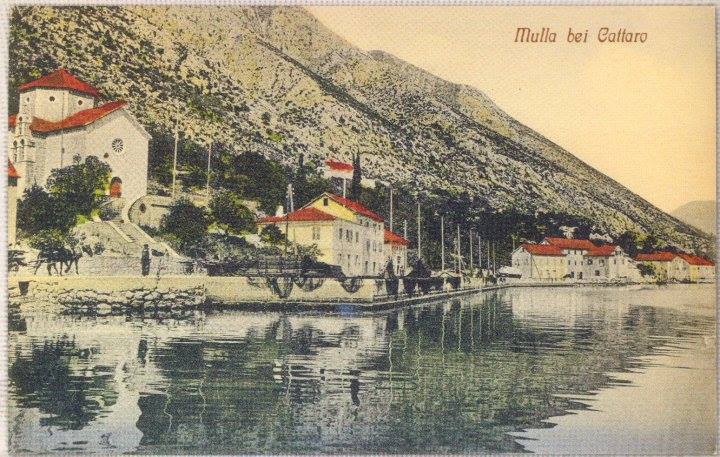
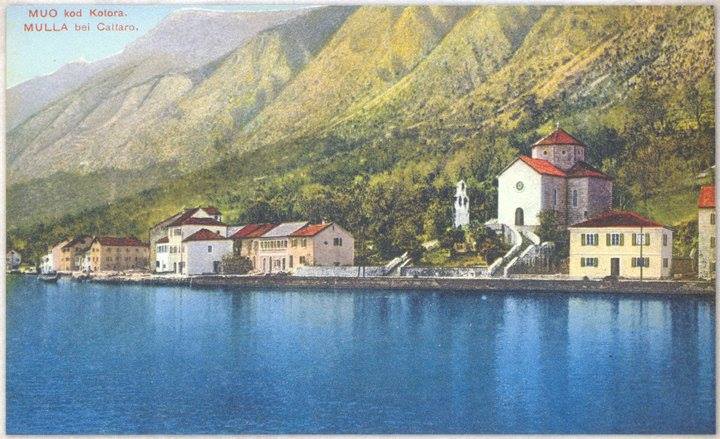
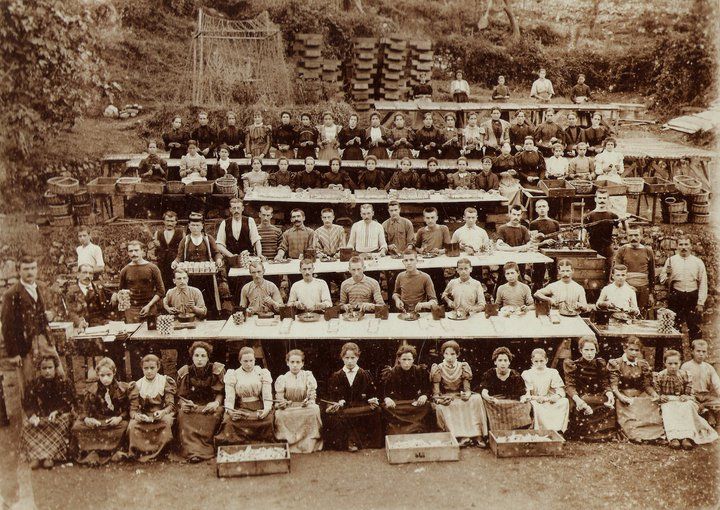
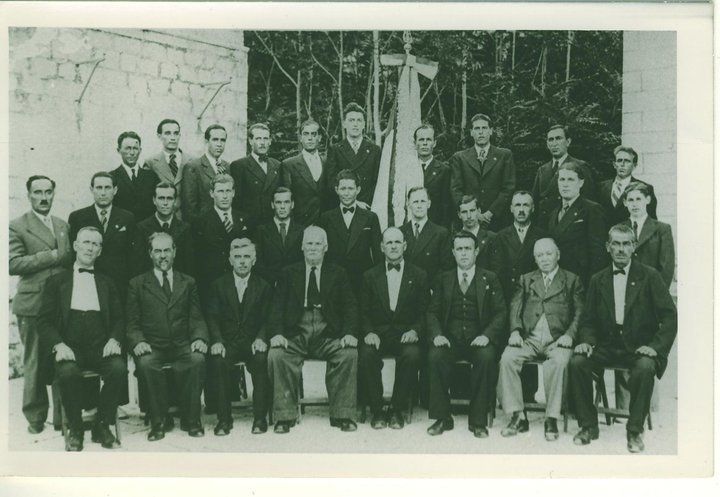
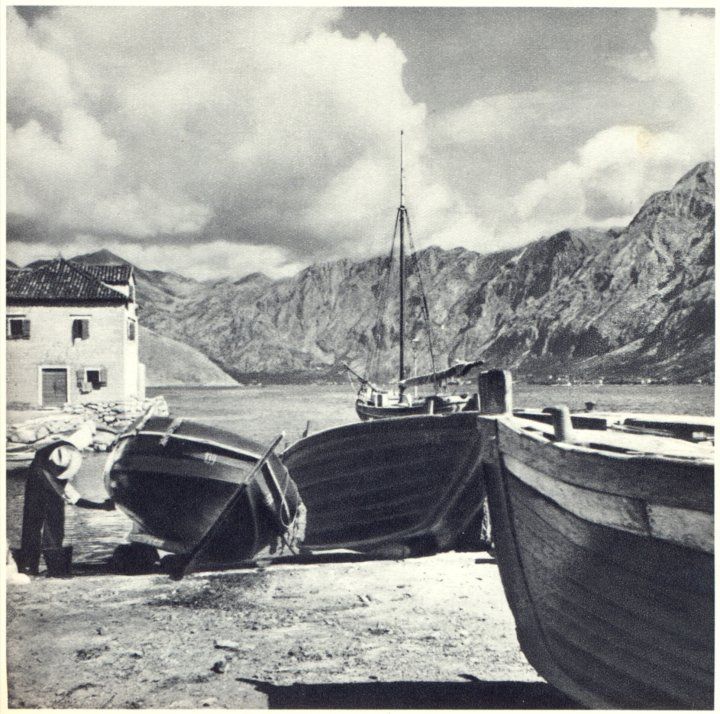
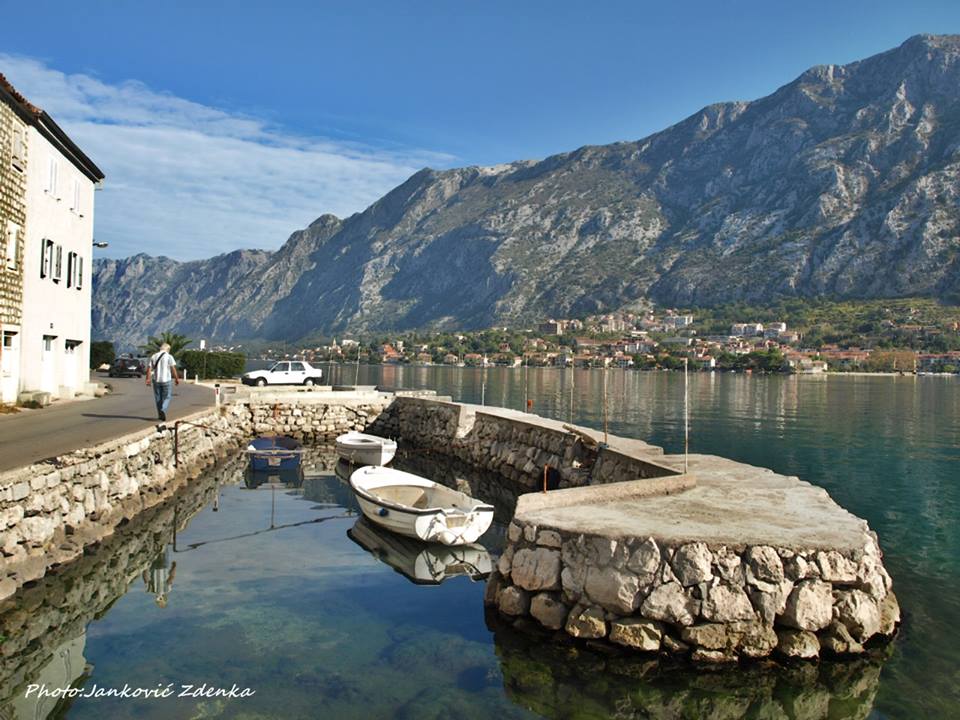 photo by Zdenka Jankovic
photo by Zdenka Jankovic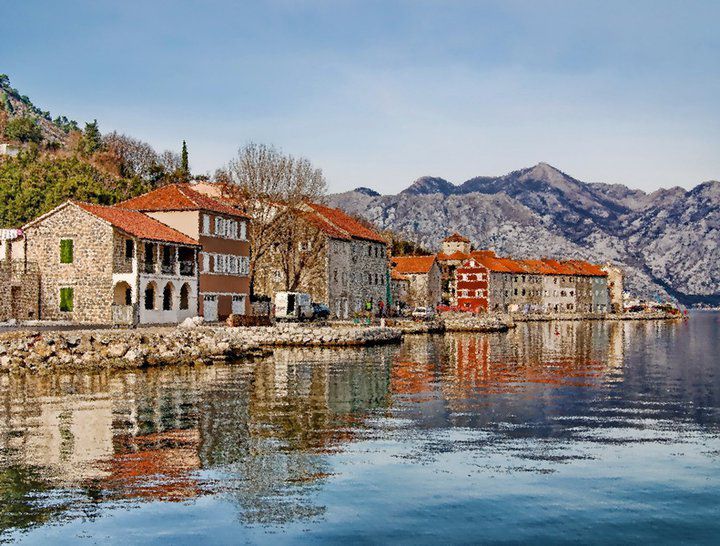 photo by Zoran Nikolic
photo by Zoran Nikolic





